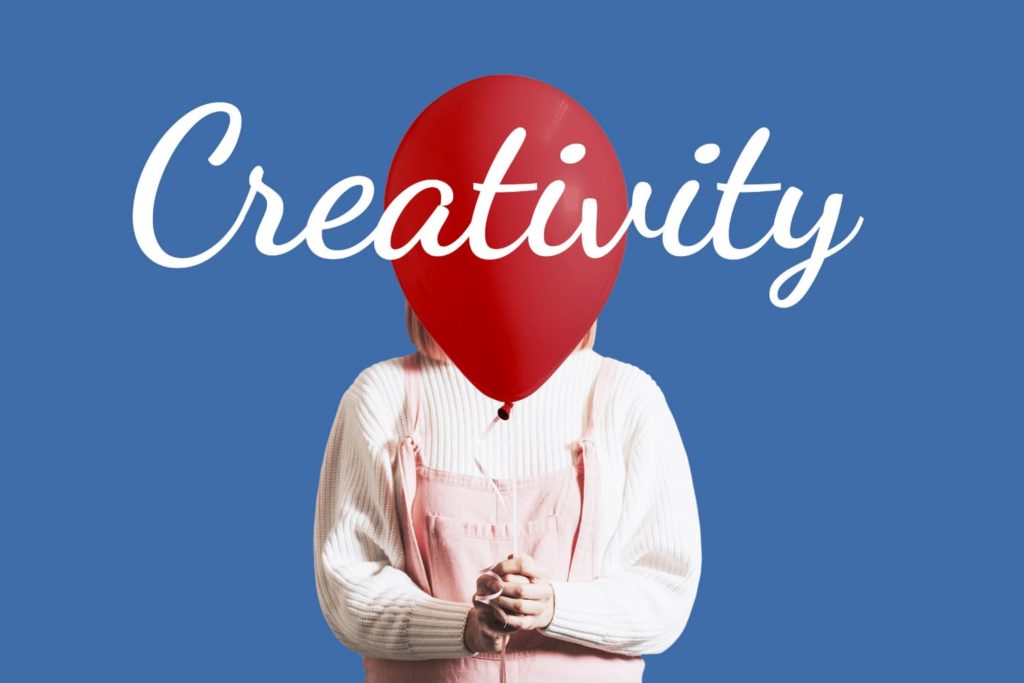
Defining Creativity (Beyond the Arts)
Defining creativity is difficult, precisely because it is such an expansive concept. We can be creative in infinite aspects of our lives, but the ways that we talk about creativity are normally confined to the realm of the arts. If you ask a dancer what creativity is, chances are you will get a definition that uses dance terminology. For many people, the default vocabulary for describing creativity comes from visual art, often painting. But not everyone is creative in particularly artistic ways. Some people are creative in their parenting; others are creative in organizing their home; some people are creative in planning parties for friends. The trick when defining creativity is to do it in a way that encompasses all the possible realms of creativity in life, not just the arts.
What I Mean By Creativity
When experts in the area of creativity (whether from cognitive science, art and design, or other fields) define creativity, they often use very expansive terminology. A broad definition of creativity that I have adopted in my work is the ability to make new connections for a result that is useful. That is a very abstract statement, so let’s take a closer look.
New Connections
What does it mean to make new connections? It depends on the category of creativity we are considering. The really important aspect of the connections, in terms of creativity, is their newness. In the realm of cooking, for example, a new connection could be the mixing of ingredients not previously combined. It could also be the combination of common ingredients with a new cooking technique. Someone who masters a set of 20 traditional recipes but never tried anything new or different could be considered a really good cook, but not a creative one. In order to be creative, the connections have to be new, innovative, or at least not usual.
Usefulness or Utility
The next major component of creativity is usefulness. Taking our cooking example from above, if a chef combines different ingredients with new techniques and the result is a dish that tastes terrible, then the result probably isn’t useful or particularly creative.
When considering usefulness as a component of creativity, it is important to think of utility very broadly. A result could be useful because it is beautiful, attention-getting, helpful, easy, fast, lucrative, or any other positive attribute. Usefulness could be as minor as causing mild joy or as major as saving the planet.
A Favorite Example from Animation
One of my favorite examples of creativity is the animated film The Nightmare Before Christmas. If you have not seen it, I highly recommend that you do. The plot revolves around a character named Jack Skellington, the King of “Halloween Town,” who finds portals to different holiday realms, including “Christmas Town.” Jack becomes obsessed with Christmas. He returns to Halloween Town to recruit conspirators in order to put their own ghoulish spin on Christmas.

I think that the 1993 Tim Burton film was such a good example of creativity because it clearly demonstrated its two main components: new connections and usefulness. The connections were very clear because the film combined popular-culture ideas about Halloween with those of Christmas. The film was new or innovative in that there had never been a stop-motion animated film that combined those holiday themes in such a way. The result was also clearly useful on a number of fronts: the film was 1) fun and enjoyable, 2) visually stunning, 3) award-winning, and 4) an economic success. The Nightmare Before Christmas clearly exemplifies creativity in a way that makes a complex concept easy to understand.
Conclusions
Many people don’t consider themselves creative because they are defining creativity in a narrow and outmoded way. If a definition limits creativity to the arts, then only artists can possess creativity; at the outside, people who craft in their free time could be considered creative using those old definitions. Even so, limiting creativity to the arts excludes the majority of the population. If we define creativity instead as the ability to make new connections for a result that is useful, then we can see that many people exercise creativity on a regular basis. I have a friend from college who is extremely creative in the way that she reuses items in order to cut down on waste. One of my nephews is very creative in the ways that he grows and takes care of houseplants in order to use them for decorating his house. I hope you will learn to see yourself as creative, and perhaps find ways to infuse more of your life with creativity. What is important is that you are making new connections or doing things in innovative ways. And even if the utility of those connections or activities is simply that they bring you joy, then that is enough for you to consider yourself creative.